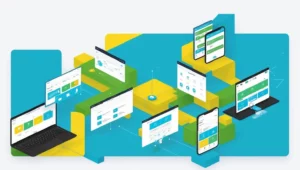Exploring Non-Coding Prototyping Tools for Web Design
Introduction
Non-coding prototyping tools are revolutionizing web design by enabling designers to create interactive prototypes without writing a single line of code. These tools streamline the design process, enhance collaboration, and help bring ideas to life quickly and efficiently.
What are Non-Coding Prototyping Tools?

Non-coding prototyping tools allow designers to build functional prototypes of websites or apps using intuitive drag-and-drop interfaces. These tools focus on design and user interaction, making it easier to test concepts and gather feedback early in the process.
- Eliminate the need for coding expertise.
- Focus on visual design and user experience.
- Provide interactive elements like buttons and navigation.
Why are Non-Coding Prototyping Tools Needed?
These tools play a vital role in modern web design by simplifying the prototyping phase and improving communication across teams.
Speeds Up Development: Quickly create and iterate on designs.
Facilitates Collaboration: Share prototypes with team members and stakeholders easily.
Enhances User Testing: Validate concepts with functional mockups before development.
Reduces Costs: Identify and resolve design issues early, saving resources.
Key Design Considerations
When using non-coding prototyping tools, keep these best practices in mind:
Choose the Right Tool: Select platforms like Figma, Adobe XD, or InVision that suit your needs.
Focus on Functionality: Include interactive elements to simulate user flow.
Gather Feedback Early: Share prototypes with users and stakeholders for insights.
Iterate Quickly: Refine designs based on feedback to improve usability.
Align with Development: Ensure prototypes can transition smoothly into the development phase.
Closing Note
Looking for innovative ways to streamline your web design process? Our team can help you leverage non-coding prototyping tools to bring your vision to life. Contact us today!
